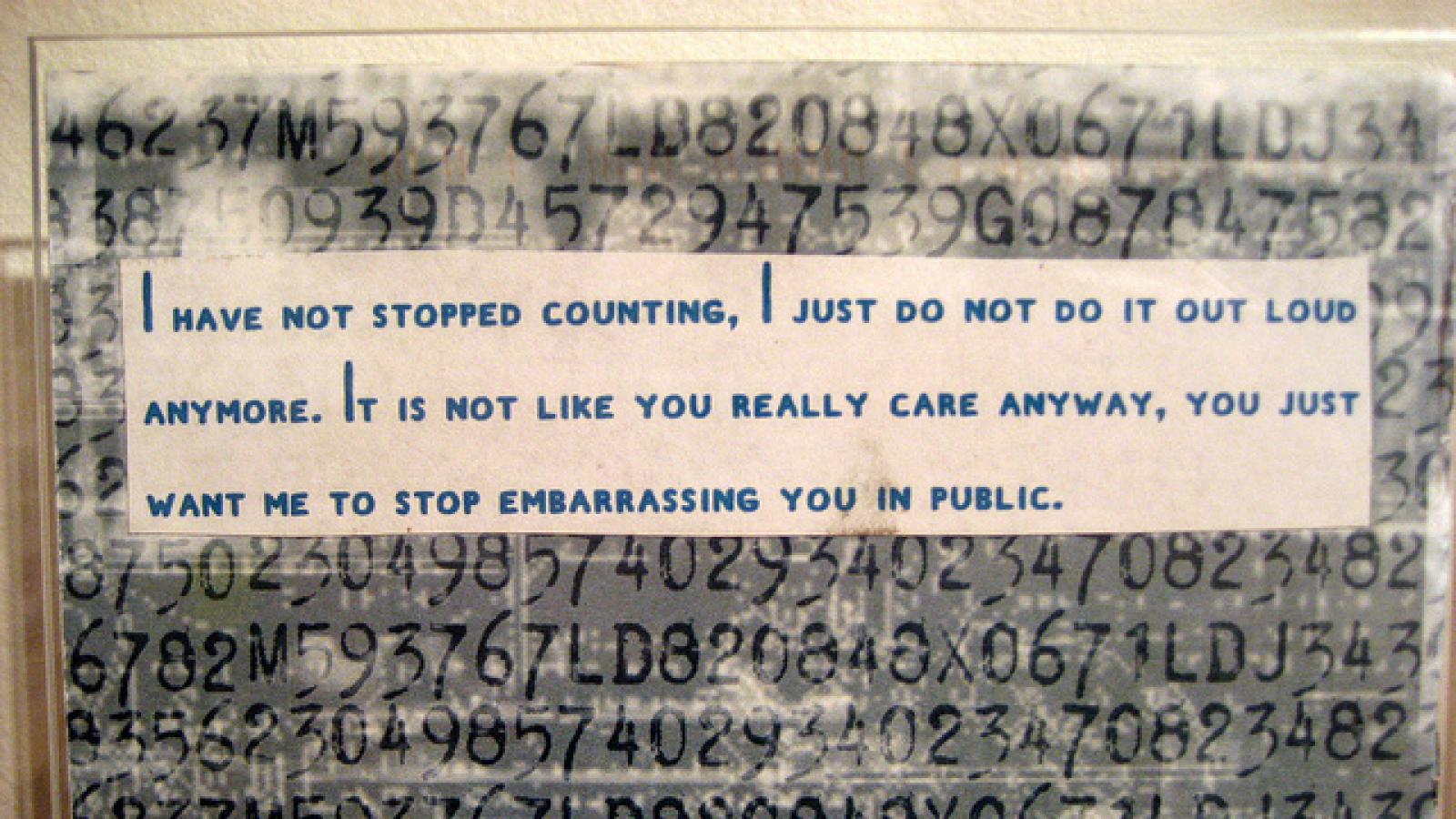The Art of Sharing Secrets

Secrets are typically meant for hiding: in diaries, in hearts, in deep, dark corners of closets. But as part of PostSecret, the wildly popular community art project, anonymous senders write their secrets nakedly on postcards, without even an envelope to veil them. As the postcards make their way to the home of PostSecret founder Frank Warren, these secrets are exposed to the postal workers who collect, sort, and deliver the mail, and if chosen for the PostSecret blog, to millions of readers around the world.
“I think in the DNA of PostSecret is the trust of strangers and the intimacy that can come from that,” said Warren in a recent phone interview. “There's something about the power that comes from these vulnerable secrets, and the courage that strangers show in trusting people they'll never meet with their deepest, most personal stories.”
The project began in 2004, when Warren handed out 3,000 self-addressed postcards on the streets of Washington, DC, and asked people to write down and mail a secret they had never shared before. “I got back just a handful, but I scanned them, put them on the web, and the website went viral,” said Warren. “That’s when people around the world started to buy their own postcards. They started arriving with postmarks not just from Washington, DC, but from California and Texas and Beijing and Warsaw and Auckland and Iraq and Dublin.”
Since then, the website has received 500 million hits, and Warren has received over a million postcards by mail. More than 500 of these are currently on exhibit at the National Postal Museum, a 2016 Blue Star Museums participant. Wedged between Plexiglass, the secrets shown in PostSecret: The Power of a Postcard are by turn disturbing and shocking, funny and heartbreaking, hopeful and remorseful. They are short, poetic confessions fit into 4.25 by 6 inches, and often made more affecting through carefully wrought illustrations, collage, and typography. They can serve as reminders that you are not alone in your painful feelings or experiences, and just as often make you realize how lucky you are that those painful feelings or experiences are not your own. A selection of secrets on exhibit includes:
I told my family that I had a business trip and took a vacation by myself.
I steal flowers from gravestones and put them in a vase on my kitchen table.
My grandmother’s cooking sucks!
Imagine my surprise when you loved me back.
I know he doesn’t love me anymore.
I’m afraid my unborn children will not be as beautiful as my sister’s kids.
I leave poetry in library books.
Although Warren said that PostSecret has its roots in mail art, he believes the nature of the project has “created a special community that goes beyond that,” he said. “It's amazing the stories I've heard from people who have been motivated to change their lives by an anonymous secret shared by someone they'll never meet.”
It’s also motivated people to change the lives of others. Warren noted that over a million dollars have been raised for suicide prevention, and the site has raised awareness about eating disorders and other mental health issues.
There have also been touching individual stories. Warren spoke about a postcard he received that read, "I wish Santa Claus was real so I wouldn't have to see the look of disappointment on my son's face when I told him that his mother had lost her job and there wouldn't be any Christmas presents this year." The response was so great when the secret was posted that Warren was able to connect the original sender with well-wishers, and hundreds of dollars were raised for the woman and her child. Warren said that the mother later wrote him an e-mail saying that “through that experience, the real gift and grace of Santa Claus became true.”
This type of outreach and fundraising is yet another example of how PostSecret has leveraged the relationship between the postal system and the Internet. Although the Internet is what has allowed PostSecret to become as well-known as it is today, the project’s insistence on postcards—tangible, hand-decorated, and highly personal—quite literally gives the secrets more weight and depth than e-mail can offer.
“I think that PostSecret would not have been possible except at this point,” said Warren, noting the interplay between traditional and digital forms of communication. “Connecting that too is a real cultural movement we're having right now because of the web, where young people especially are sharing more of themselves, are sharing parts of who they are that their parents' generation and earlier generations would never talk about. So PostSecret caught that confessional wave.”
In today’s automated, impersonal world, it’s somehow comforting to walk between the display cases at the National Postal Museum, surrounded by secrets, and know that we can trust strangers—from our postal workers to museum visitors to blog readers—to safeguard and embrace us at our most vulnerable and exposed.




